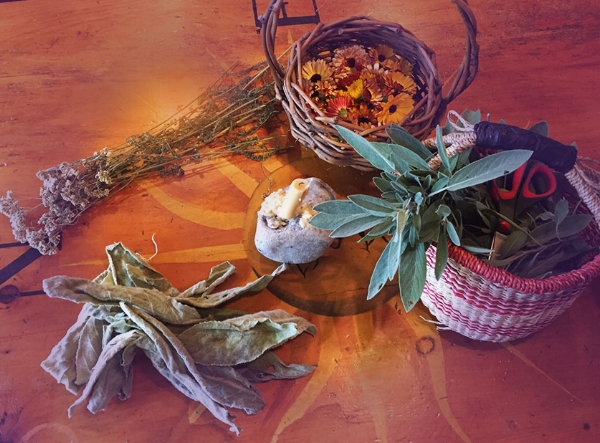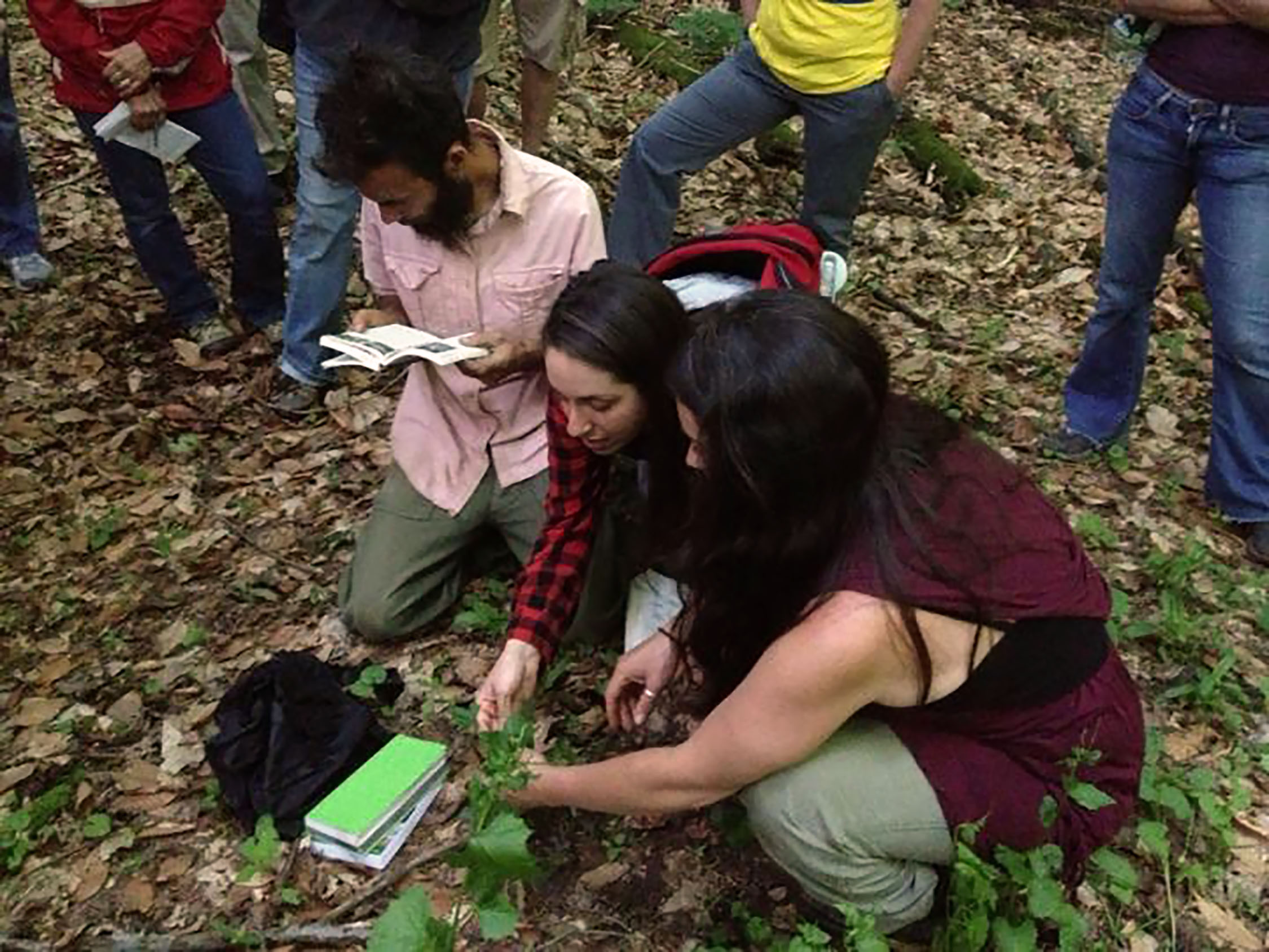Plant Study Guide
Plants are dynamic, living systems as well as fundamental participants in the ongoing evolution, symbiogenesis, and creation of life on Earth.
Symbiogenesis is a theory described by evolutionary biologist Lynn Margulis that identified the cooperative processes and convergence between species that assures survival and adaptation as opposed to the competitive “survival of the fittest” theory.
We can learn about plants in different ways and the human history and ongoing relationship with plants can be understood from many different perspectives. Often, in popular herbalism, we just look at the simple aspect of “what are the medicinal qualities of this plant?” This can be an appropriate and accurate method of learning in some cases, but it doesn’t explain HOW or WHY we know this.
It misses the totally of a plant’s character and qualities as well as how it has and is co-evolving with human communities.
Only considering the popular or most publicized uses of a plant is to only consider a narrow and linear scope of qualities. The medicinal uses of herbs have come to humans from several directions.
To deepen my own study of plants and as a method of teaching students I have begun using a Planthenge. This is just a simple model that was inspired by the geometric layout of Stonehenge and the many other sacred stone circles of Celtic Europe, Carl Jung’s model of mandala consciousness, and Paul Bergner’s 4 directions model of studying plants.
“Trust that which gives you meaning and use it as your guide.”
Below is the Planthenge template I use
This model places any plant of study in the center of the henge and guides us around the wheel of the year in the same way the stones are aligned with the motion and angles made by the sun’s distance from the Earth.
Each position provides a different, yet connected, origin of knowledge AND each on it’s own is limited and does not provide a full scope of understanding so the goal is to integrate them. Some of us might find that one area or another calls to us and that’s important. Each person has a different learning style and each finds their own, unique way to relate to and study plants so may choose to focus on one aspect more than the others.
There are 8 directions or points:
Winter Solstice: This is where we study the folklore, historical uses, and written records of how plants were used by ancestral peoples. This might include ancient healing traditions, the way that our own ancestors might have used a specific plant, family or cultural stories we know or heard about plants, and written books and documents.
Limits: Folklore and historical uses of plants were often passed down verbally so aren’t always accurate. Printed historical texts are subject to print bias which means that usually people that had access to a printing press and resources to pay for printing were only a select group.
Imbolc: This is where we determine the family, genus, species, and other taxonomical information about a plant. Knowing this information is important to understanding the patterns and distribution of plants of similar species and it gives us a universal language in identifying plants and using plant ID guide books or apps.
Limits: This doesn’t really tell us much about the medicinal properties of a plant other than, perhaps, that it might have similar properties to other plants in the same family.
Spring Equinox: This is where we study the botany and any scientific research that has been done about the plant. This is particularly important for those who are interested in clinical or medical herbalism. Also, an understanding of botany helps us to understand how to optimize the growing, cultivation, and harvesting of medicinal plants by promoting health and potency.
Limits: The scientific method is linear, non-integrative, and reductionist. We can learn great things from this but never the complete scope. Any given plant contains approximately 300 chemical compounds that work synergistically. It is impossible to control for 300 or more variables in a controlled setting so most research on plants is down with isolated compounds which, obviously, does not provide information on how that compound is interacting with the others.
Beltane: This is where we use “organoleptic” or sensual methods of studying plants (organoleptic means what we experience through our sense organs) and the “doctrine of signatures”. The doctrine of signatures is a traditional method of learning about plants that teaches us that a plant looks like the organ or condition for which it’s medicine is for. This is how we perceive a plant to taste, feel, look, or smell. The bitterness/sweetness or roughness/smoothness of a plant can tell us a great deal about it’s actions and can even indicate what chemical compounds it might contain. For instance, plants with salicylates in them have a very specific “sweet” smell.
Limits: Sensory information is relatively subjective and requires a good deal of practice to master.
Summer Solstice: This is where we learn about how a plant is being used by others as well as what we have experienced using a plant ourselves. Here we may look at case studies and talk to herbalists about their outcomes using a plant with their clients. Often, when we actually use a plant, we have results and experiences that haven’t been discovered by others or that haven’t been study or written about before. Plants not only have many medicinal properties, but each person is different and has a unique bio-chemistry and the combination of these can bring unique results.
Limits: There can be contradictory and anecdotal information, that although good to know, may not be applicable or supported by the other areas of study or your own experience. It’s also hard to establish consistency in preparations and dosages.
Lammas: This is where we study the energetic correspondences of plants to other systems such as elemental, alchemy, astrology, humoral, tarot, and other traditional healing arts. When we learn, for instance, what planet a plant corresponds to or is ruled by it tells us something about the nature of the plant. If it’s ruled by mars it tells us that it might be “hot” in energy. If it’s ruled by the element of water it might be moistening to the tissues of the body.
Limits: The correspondences of plant energies can vary from tradition to tradition.
Fall Equinox: This is where we explore the magical, ritual, and spiritual uses of plants. Plants have always been invoked as tools of cultural magic and spiritual connection. They have been used in spellmaking, burned in purification, protection, and divination rituals, and imbibed to catalyze meditative or trance states. Plant spirit and intuitive methods of healing include the use of flower essences, amulets, dream bundles, and plants in visual art and imagery.
Limits: This area doesn’t teach us about the physical or biochemical actions of plants.
Samhain: This is where we learn about harvest times, parts used, possible preparation, recipes, storage, and use in cooking. It’s also the time of endings and beginnings where birth and death meet at the same point on the circle.
Limits: These are the “finishing” or practical skills we need to know but not the fundamental knowledge of medicinal properties
Learn the many directions of plants with me at a monthly online Plant Study Group by joining Rhizomatic Earth Medicine. This is a subscription membership that includes monthly missives delivered to your inbox with writings about plants, place, and magic, poetry, videos, informational pdf’s, worksheet, recipes, ritual, and all things wild, green, and Earthly




